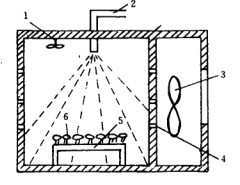Generally speaking, there are four kinds of polarization phenomena in wood: the electron displacement polarization molecule, atom or ion’s electron shell displacement relative to the nucleus along the direction of the external electric field; the ion displacement polarization molecule in the ion displacement polarization molecule along the direction of the external electric field relative to other ions displacement dipole polarization polarization polarization polarization polarization molecule electric dipole moment to the direction of the external electric field orientation The time required for the four polarizations to be established is different. The pool polarization takes the shortest time, about 10-14 seconds, 10-12 seconds for the ion displacement polarization, and 10-12 seconds for the electron polarization direction. It takes several seconds, tens of seconds or longer to establish the electromagnetic frequency infrared ultraviolet time when the polarization is greater than 10. Fig. 1 The effect of different polarization mechanisms on the dielectric coefficient in microwave field. The wood polarization will change with time to the electron displacement polarization and the ion displacement polarization establish rapidly, without hysteresis, so there is no thermal effect.

Orientation polarization is not the case, because it takes longer to establish than the microwave cycle, that is, lagging behind the changes in the microwave field, there will be a thermal effect. Water molecule in wood is a polar molecule with fixed electric dipole moments. It oscillates or oscillates in the alternating orientation of microwave field, interacts with the surrounding molecule and produces thermal effect just like friction, which is the main aspect of wood medium loss. As for the interfacial polarization, which takes much longer to establish than the microwave period, the polarization phenomena are very insignificant. Thermal effect 3 Wood polarizability tensor and dielectric tensor do not appear. Wood is a kind of anisotropic dielectric, and their dielectric properties should be characterized by polarizability tensor and dielectric tensor. The situation of dielectric in alternating electric field 5. For isotropic dielectric E, polarization P and electric displacement D in the same direction, this paper uses the complex form and scalar symbols, such as E, D and P.
没有评论:
发表评论